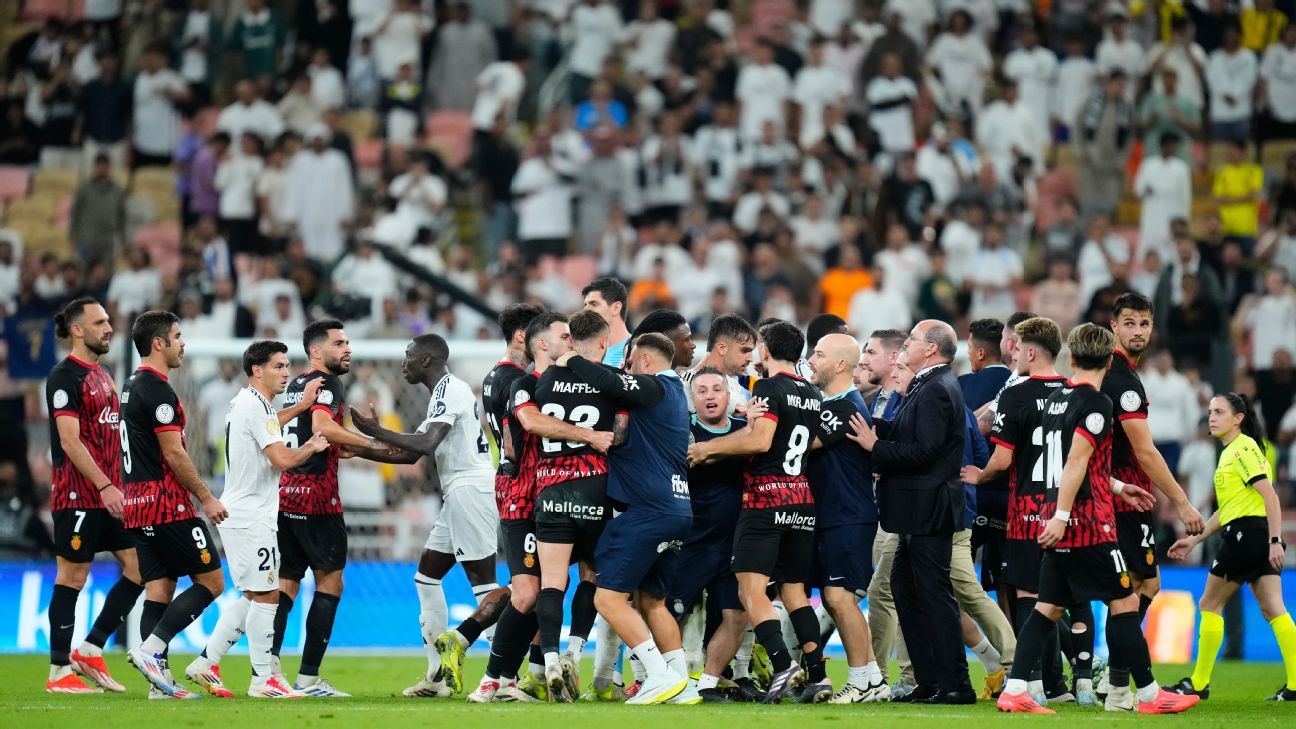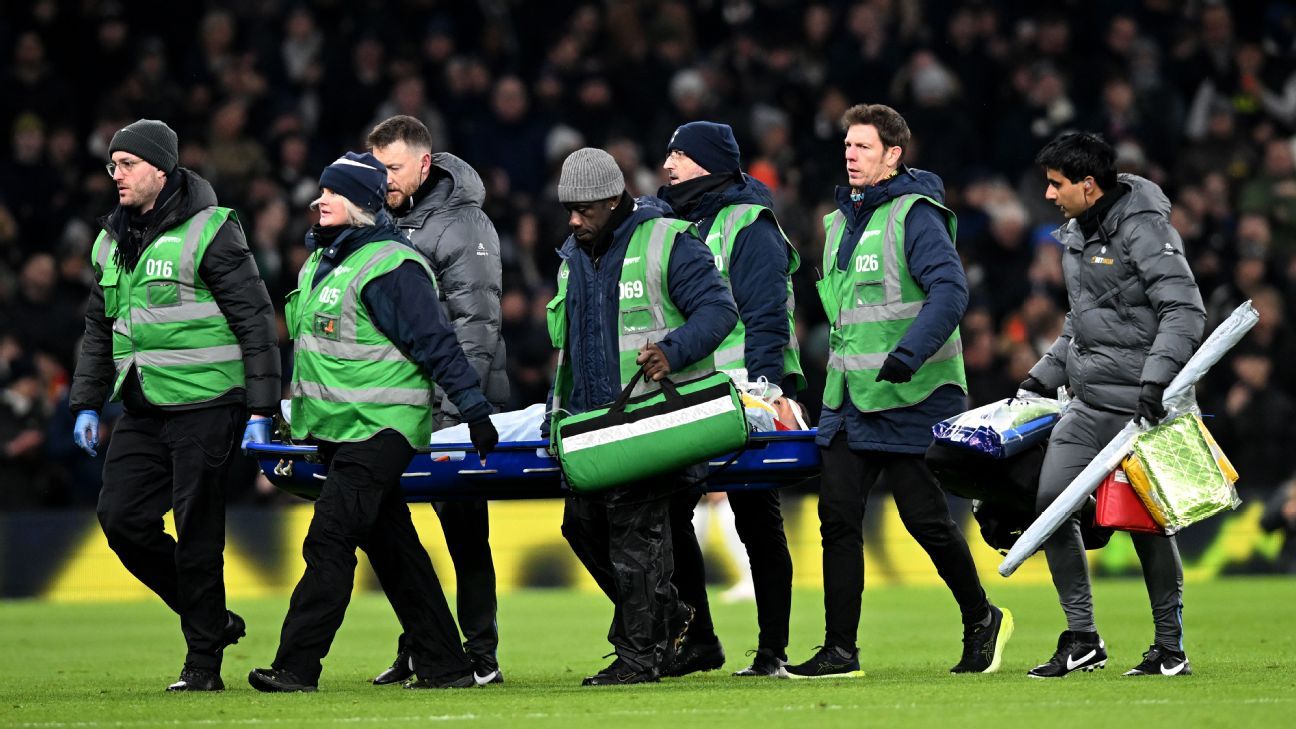
Mark Ogden, Senior Writer, ESPN FCDec 15, 2023, 02:14 PM
It is often cited as the biggest game in English football, the clash between the Premier League's fiercest rivals and England's historically most successful and best supported teams. But Liverpool vs. Manchester United is also a fixture that has changed the way we watch the game, triggering greater awareness of a problem that many simply can't see.
In January 2021, a 0-0 Premier League draw between the two clubs at Anfield would have been instantly forgettable but for the deluge of complaints on social media about Man United's dark green away kit, worn because their red home shirt would directly clash with Liverpool's traditional colours.
Despite it being a game between a team in red and a team in green, one in 12 men and 1 in 200 women were unable to distinguish between the two sets of players on the pitch. As a consequence, the UK-based organisation Colour Blind Awareness saw social media channels swamped with messages from viewers who simply found the game unwatchable on television.
"We had hundreds of complaints," Kathryn Albany-Ward, CEO of Colour Blind Awareness, told ESPN. "That game between Liverpool and Manchester United led to the most complaints we have ever had."
- Stream on ESPN+: LaLiga, Bundesliga & more (U.S.)
- Read on ESPN+: Ranking the reasons Man United have been awful
In what is being regarded as a small but important victory for those campaigning to raise awareness of "colour vision deficiency" -- commonly known as "colour blindness" -- Man United have chosen to wear their white third kit at Anfield on Sunday, rather than the green strip they have worn when faced with a colour clash away from home in the Premier League this season.
A United source told ESPN that although their green away kit is "striped and provides a point of differentiation," Erik ten Hag's team will wear white against Liverpool because "colour contrast issues are considered, and the problem is a valid concern for the many people affected."
Since that Liverpool-United game in 2021, the Premier League has issued a nine-page document covering kit selection guidance for clubs solely focusing on the issue of colour blindness, with an updated version this season advising clubs to be mindful of colour blind players when considering kit selection.
The Premier League document cites the statistics on the portions of the population that suffer from the hereditary condition, and flags the most problematic colour clashes: red against green, red against black, and green against orange. In conjunction with PGMOL, the match officials' organisation, the Premier League has devised an online software tool with a "colour blind-friendly flag" that is used to assess the risk of potential issues with kit selection. If a possible colour clash is raised, clubs are informed and urged to find an alternative option.
But with a number of colour issues having emerged this season, the problem has not gone away in the Premier League.
"We've been working on the kit issue since 2015," Albany-Ward said. "So that Liverpool-United game in 2021 shows how much work there is still to be done to get the message across to clubs, especially as there have been kit clashes in the Premier League this season. Notably Luton vs. Tottenham, Man City vs. Tottenham -- that third Spurs kit (described as "Taupe Haze" by manufacturer Nike) is causing a lot of problems -- and Arsenal vs. Man United (in green).
"So although there have been some changes for the better, including this weekend's Liverpool vs. Man United match kit selection, there is still a long way to go."
1:06
Postecoglou: Spurs not playing European football has hurt us
Ange Postecoglou says he is targeting a Champions League spot next season after Tottenham Hotspur missed out on European football this season.
It is not just a football issue. In 2015, the NFL pledged to improve awareness of colour blind fans following hundreds of complaints in relation to a game between Buffalo Bills (red) and New York Jets (green). Meanwhile, World Rugby has introduced regulations on kit clashes that will become mandatory on Jan. 1, 2025, a date set to allow kit designers time to produce playing kits that fit the new guidelines.
"For Rugby World Cup 2023, we were involved in the on-field broadcast kit testing because light/shade/bad weather and floodlighting can all affect how colours can be perceived," Albany-Ward said. "Players rely upon being able to differentiate shirts in a split second in their peripheral vision, so clubs really need to get a grip of this topic because they do have colour blind players and they are disadvantaging their own team where they don't have a suitable kit range to avoid colour blind kit clashes."
The point about players suffering from colour blindness is a real one, but rarely cited as such. There are few players who have publicly admitted to being colour blind, although Denmark international Thomas Delaney called a radio phone-in prior to the 2018 World Cup to admit his condition meant he struggled to differentiate players while playing in a pre-tournament friendly against Mexico. Denmark wore red and Mexico played in green.
In 2022, a European Union-funded research project called Tackling Colour Blindness in Sport (TACBIS) found that 6% of elite level footballers suffer from the condition. Danish club Randers, who took part in the study, discovered that two first-team players were colour blind during the assessment. But with many young players undiagnosed with colour blindness while attempting to make the grade in the game, the research also found a high failure rate in those attempting to become professionals.
"Our results have demonstrated that approximately 25% of colour blind players are not making it to the elite level, which is a problem for football as it represents wasted time and financial investment of academies and negative career and mental health implications for players," said Adam Bibbey, senior lecturer in sport and exercise psychology at Oxford Brookes University.
"Colour blind players have indicated that they do not feel as though they can speak out about their challenges for fear of embarrassment or detrimental impact on contract negotiations," he added. "Elite colour blind players have also outlined the detrimental impact on training and match day performance due to difficult combinations of kits and bibs or incorrect use of equipment. These barriers can be easily addressed."
If a footballer cannot distinguish between his teammates and opponents simply because of colour blindness, it raises obvious issues. Meanwhile supporters paying subscription fees to watch their teams on television would feel short-changed if their viewing experience was made close to impossible solely by the kit selection of the teams involved.
"I find it really shocking that clubs invest huge amounts in their players as financial assets, analyse their food intake, fitness regimes, etcetera to the nth degree but don't pay any attention to the most fundamental point, which is the impact of kit colours and whether all their players (and coaching staff) can easily distinguish between their teammates and the opposition," Albany-Ward said.
"If a player is unsure about whether or not to make to someone running in their peripheral vision that's a lost opportunity for their team as a whole. But if colour blind players can tell kits apart easily, then the on-field kit issues for fans and the knock-on implications for broadcasters simply fall away."
So United wearing white, rather than green, at Anfield on Sunday is step in the right direction -- for fans and players alike.
 (1).png)
 1 year ago
31
1 year ago
31


















